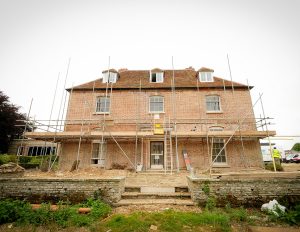 Making changes to an older property
Making changes to an older property
Historic England (previously known as English Heritage) is the public body that helps people care for, enjoy and celebrate England’s spectacular historic environment.
The organisation has published advice about things that you should consider when considering alterations, renovations or refurbishment of an old building. This is a summary of information from Historic England’s website.
General principles
If you own an older building, follow the three R’s if you are considering any work.
Research – investigating the history of your property before you start will help you to understand the building’s important and historic features. The research should help you to understand what special listings apply and what permissions you need to obtain before starting work.
Reversibility – it is recommended that alterations, additions and repairs to historic buildings are capable of being reversed. This should minimise the impact on historic material, preventing the original plan, form or appearance of your property from being lost forever.
Record – It is worth taking every opportunity to learn about the construction of your property and record any historic material or features of interest discovered. If your work involves digging beneath floorboards or going behind modern wall finishes you may have an opportunity to see things that have been covered for many years. By sharing any findings with your local historic environment records and any other relevant archives, future generations can share what you have discovered.
Understand the history of your building
If you know why your property is significant you can think of changes that maintain and augment its history. An appreciation of how the building has been constructed and what materials have been used should give you an idea of what changes are feasible.
An awareness of the changes that have occurred over the lifetime of the building may help to appreciate which alteration or extensions have enhanced the property’s character and interest. Some changes which were not done in a considered way can cause long term problems and may even have harmed the building. Your changes may be an opportunity to put things right and enhance the significance of your home.
What permission is required?
You need to check whether the work that you are intending to carry out requires planning permission. Some works require planning permission whatever the age of the building. You should contact your local authority planning department to find out if planning permission is required.
It is important to remember that if your building is a listed property or situated within a conservation area that additional permissions will be required for the intended work.
If your property is listed, you must obtain listed building consent for all work that involves alterations, extensions or demolition that will affect the building’s architectural or historic interest. The requirement to obtain listed building consent applies to all types of work and all parts of the house that are covered by the listing if it’s special interest will be affected.
Properties that are located within a conservation area are subject to extra controls when the local authority wants to protect particular building features (e.g. doors or windows). These are known as “Article 4 Directions” and restrict work that wouldn’t normally require planning permission such as replacing a window with one of similar design.
Demolition of a listed building or a building in a conservation area will require planning permission and listed building consent.
There are additional types of permission required for specific types of property, for example if the building is a listed place of worship then the works may require an Ecclesiastical Exemption.
It is a criminal offence to carry out works to a designated historic building without consent when it is needed. If you are not sure if your property is listed or in a conservation area you should contact your local authority.
Traditional materials
When working on your building Historic England recommend that you try to use traditional materials and methods wherever possible.
Original historic materials are unique and contribute to the character and significance of the building. However, the material is unlikely to be in perfect condition and it will require some element of repair.
Sometimes, modern technology and materials may help to retain more of the original material but you should seek expert advice. Perhaps this will mean finding a specialise joiner to construct new sash windows out of suitable wood, or finding the right slates to repair the roof.
If your house is listed surviving historic material and objects may form part of the reason for listing and listed building consent will be required if the work will affect them.
Energy efficiency
Greater awareness of the part that our properties play in producing greenhouse gas emissions and using energy means that if you are thinking about making changes to your property it is a good time to consider how you could make it more energy efficient without spoiling its character.
For example, installing insulation can be quite disruptive so doing it when you are already working on an area could minimise the disruption and be cost effective.
Think about how you live in the house and whether changing how you use the rooms could reduce how much energy you use.
In summary
Get to know your property so that you can fully appreciate any historic features and ensure any changes that you make are sympathetic to the original construction. Always investigate what permissions are required and don’t do any work until you have obtained all the relevant consents. When working on the property preserve special features by making sure that your works are reversible, record any extra details that you discover, and seek specialist advice. Think about how you can improve the energy efficiency of the building.
For more information you should consult the user guides available on the website: www.historicengland.org.uk .







